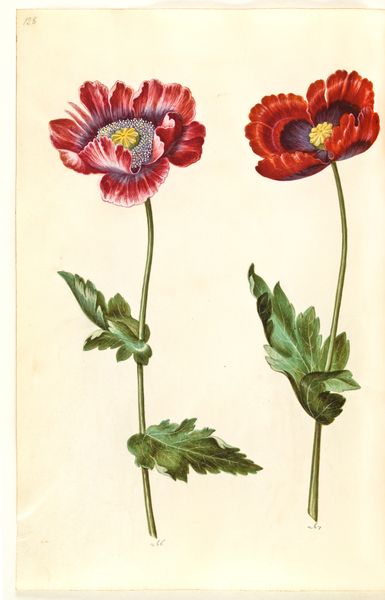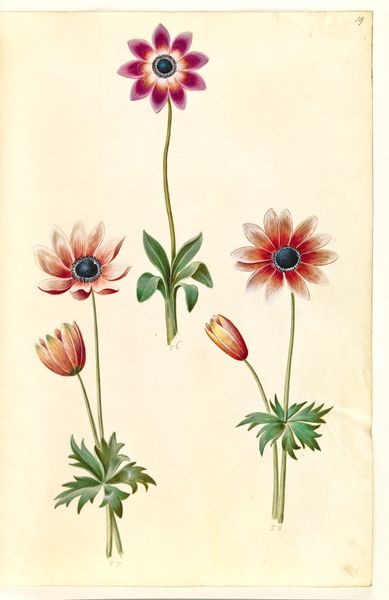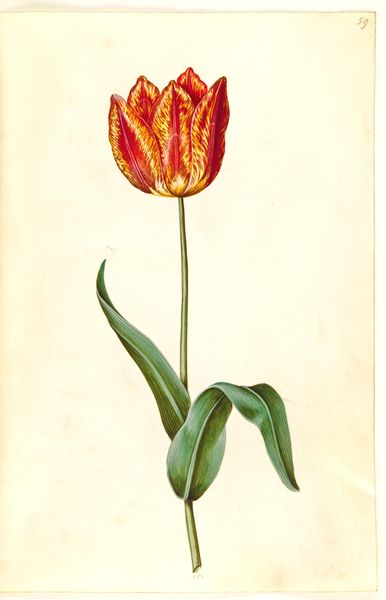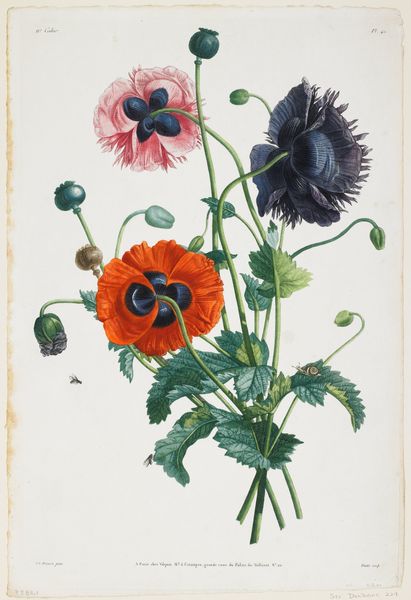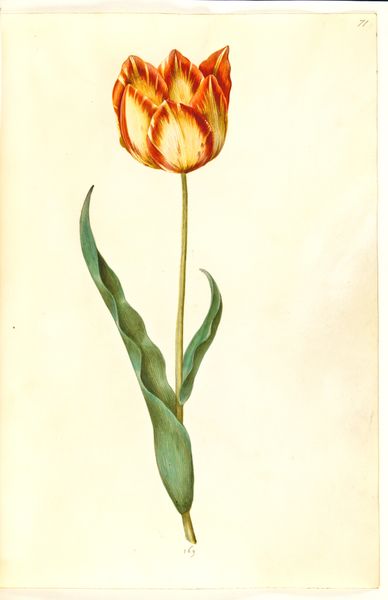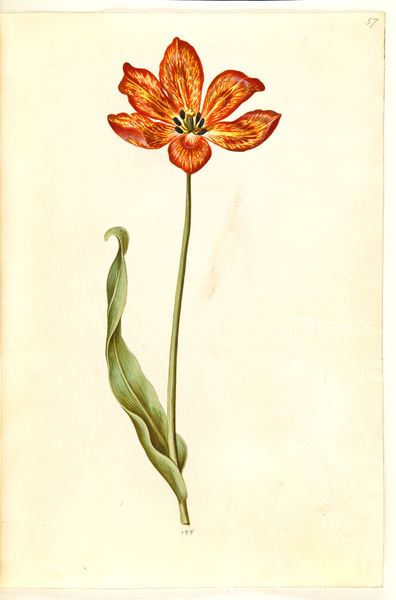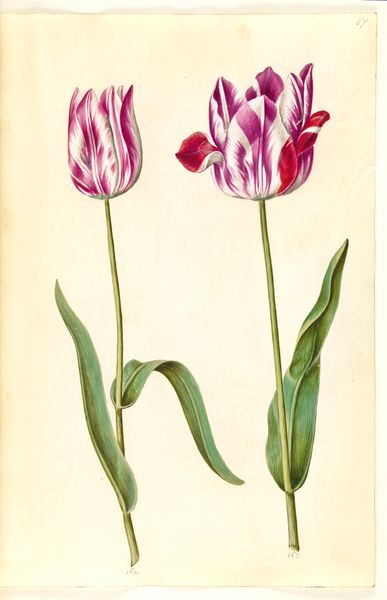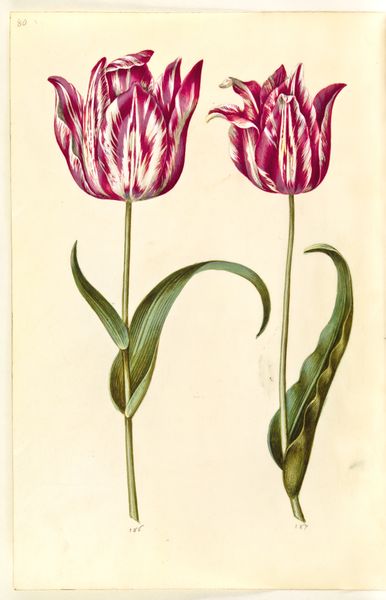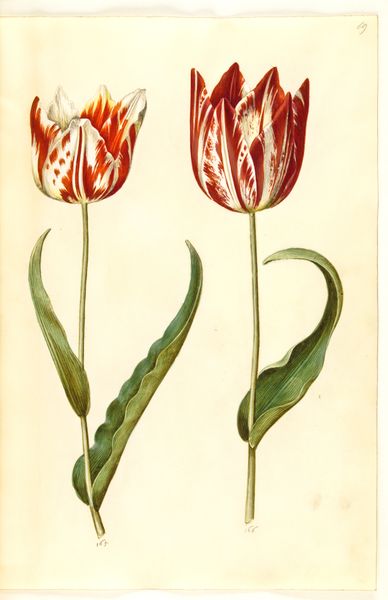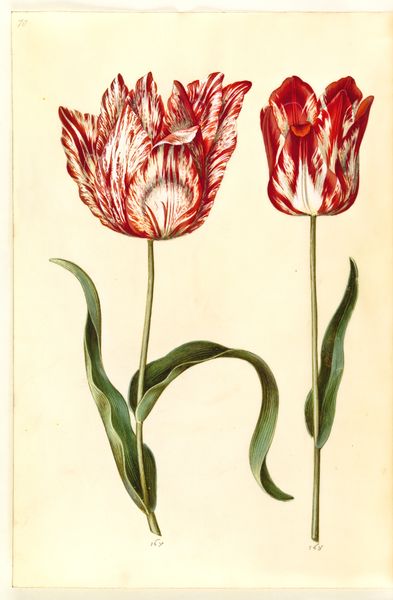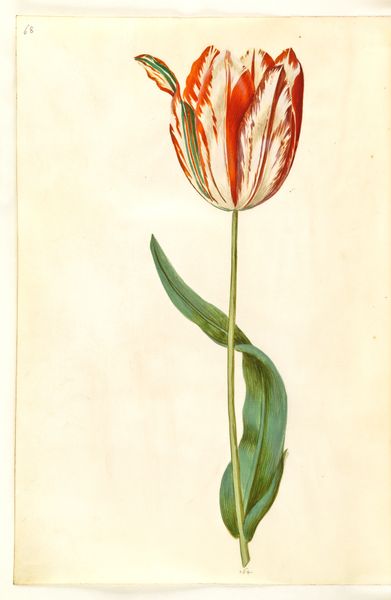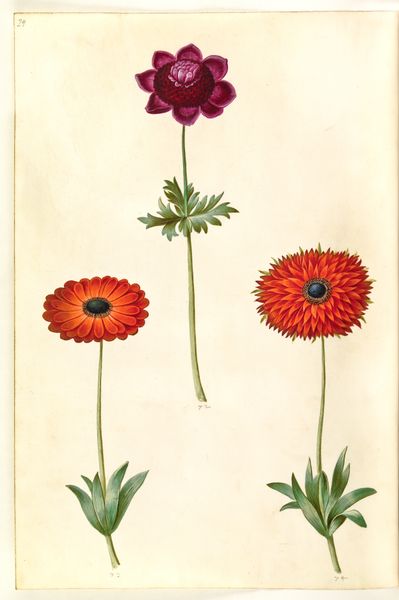
drawing, gouache, watercolor
#
drawing
#
gouache
#
watercolor
#
botanical art
#
watercolor
Dimensions: 375 mm (height) x 265 mm (width) x 85 mm (depth) (monteringsmaal), 358 mm (height) x 250 mm (width) (bladmaal)
Editor: Here we have Hans Simon Holtzbecker’s “Papaver somniferum,” or opium poppy, a watercolor and gouache drawing dating from around the mid-17th century. The crimson petals are strikingly vibrant against the plain background. How do you see this work within its historical context? Curator: It’s crucial to recognize that botanical art in the 17th century served a more complex function than mere aesthetic pleasure. Consider the global spice trade and medicinal botany. These drawings played a crucial role in documenting and disseminating knowledge about plants and their properties. Given opium's known effects, how might Holtzbecker's decision to depict this particular poppy relate to broader socio-political interests of the time? Editor: So, it wasn't just about artistic skill, but also about contributing to scientific understanding and perhaps even colonial ambitions? Curator: Precisely. Think about the networks of patronage and the interests of collectors. Royal gardens were becoming centers of botanical study, and accurate depictions of plants held considerable value. This artwork likely served within these complex institutional structures. Editor: It’s fascinating to consider the Opium poppy not just as a flower, but also as a piece of a larger, and very complicated, historical puzzle. Thank you. Curator: It certainly invites reflection on how even seemingly innocent depictions can carry significant weight in the political landscape. My pleasure.
Comments
No comments
Be the first to comment and join the conversation on the ultimate creative platform.
